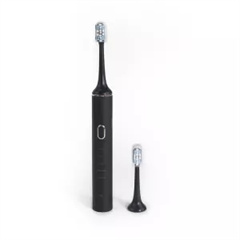In 1954, Swiss doctor Philippe-Guy Woog invented the electric toothbrush. Sixty years later, the electric toothbrush is very similar to its predecessors.
In principle, there are two categories of electric toothbrushes: rotation and vibration.
Rotary toothbrushes have a simple principle, that is, the motor drives the round brush head to rotate, which enhances the friction effect while performing ordinary brushing actions. Long-term use is not recommended due to large wear and tear.
The vibration type toothbrush is more complicated and more expensive in terms of price.
There is an electric-driven vibration motor inside the vibration type toothbrush, which can make the brush head produce high-frequency swings perpendicular to the direction of the brush handle, but the swing amplitude is very small, generally, about 5 mm up and down, and the largest swing in the industry is 6. Mm.
When brushing teeth, on the one hand, the high-frequency swinging brush head can efficiently complete the action of scrubbing the teeth. On the other hand, the vibration of more than 30,000 times per minute also makes the mixture of toothpaste and water in the mouth produce a large number of tiny bubbles, which are generated when the bubbles burst. Pressure can penetrate deep between teeth to clean dirt.








